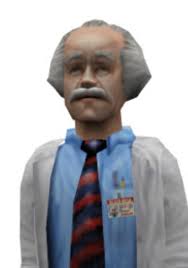Great, now we have disposable automobiles.
They already are disposable I got news for you.
I’m pretty sure cars are some of the most reused, repaired, and recycled products we have.
The vehicles will be much cheaper to make. A shame costs savings will leave out the consumer and also cause all vehicle insurance rates to go way up.
It will reduce costs for toyota.
I doubt the consumers will see any savings.
C level executives will have big fat bonuses tho
As mentioned in another thread, there is a paintless dent repair video on YT of a fix done to the corner of a Rivian rear bumper
The owner claimed that he was quoted $41K. To do the work, they would need to cut the body all the way up to the front of the roof
The PDR fix was close to perfect in this case
link pls?
Here is an alternative Piped link(s):
https://piped.video/DKPfy5djvLc?feature=shared
Piped is a privacy-respecting open-source alternative frontend to YouTube.
I’m open-source; check me out at GitHub.
Enshitification has infected Toyota. What a shame.
Just another brand I can start avoiding.
These cast bodies will be used in the 2026 EV’s, so not really a massive issue yet. Wait and see…
Corporate execs: How can we force people into even more debt so we can have even more money than we’ll ever need or spend?
This bit does not ring true:
Such a scenario would be to Toyota’s benefit however, as an unrepairable car will still need replacement—potentially with a new car. Repairability is something the automotive industry has directly combated in recent years, with a Toyota-backed industry group sponsoring a scare campaign to (unsuccessfully) undermine a right-to-repair bill. Car companies make their money from selling new cars, not keeping old ones on the road. If cast bodies serve that end better than those stitched together, it’d be no surprise to see them become the industry standard.
Car companies need their cars to hold their value secondhand so that the people who buy their new cars can afford to replace them more often. The right to repair stuff is about forcing people to use their dealerships for repairs.
No idea what Toyota’s plan is for body repairs but destroying their second-hand market is probably not a part of it.
Also, don’t car manufacturers have ridiculous margins on original spare parts? I thought they made a lot of money on those over the pretty long lifetime of the vehicles.
Yeah, I mean the main advantages for Toyota are clear and massive. Huge cuts in assembly time and factory floor space. Any effect on the second hand market is likely not intended, but also almost certainly worth the savings made, as far as they’re concerned.
It’s all about those short term profits baby! 😎
Late stage capitalism for the win
the value of a car depreciates by 50% when you drive it off the lot
Have you shopped for used cars recently?
I wish that was actually true as an exclusively used car buyer.
Not Toyotas
And?
Impossible seems a bit dramatic. Cost prohibitive is more better
If it is cost prohibitive for a majority, then it’s pretty damn near impossible.
So spaceflight is impossible?
Space flight companies aren’t trying to sell their rockets to the average consumer.
Because they can’t afford it? You think they wouldn’t try if it wasn’t cost prohibitive?
If you have a large cast part you could do the same thing as you do with a frame or body panel now. As long as there’s a replacement cast part ready, it is lots of work in some cases, so it’s less “impossible to repair” and more accurately “cost prohibitive to repair”
I wouldn’t even say cost prohibitive. Imagine if you could just swap on a whole new front end after a car crash. Currently, it takes bodywork at hundreds of dollars per hour to repair damaged body panels while this could severely reduce that time and cost.
Has anyone come up with a guess on the cost of swapping out an entire cast body section vs replacing or refurbishing the parts that would be there without the cast?
I think point is without the cast body section you could just replace broken parts which may be significantly less. In practice though I don’t think it matters that much. Small accidents hopefully don’t damage the frame and if they do it’s often a bit dubious repairing it.
Yeah, I think once you get to the point where the car needs the frame worked on, it’s probably going to get scrapped whether it has a cast frame or not.
deleted by creator
Except for trucks
Hmm, yes. Some trucks with broken or bent frames get patched up and driven.
Probably because trucks are industrial vehicles built to be driven millions of km*, and therefore are a much bigger investment, so the repair is more often “worth it” than for personal vehicles.
Also, one truck can have the cargo capacity of many cargo vans, and one bus in pendular movement has the capacity of many personal cars, so each truck/bus repair will have a greater impact.
*At least, that’s the case for buses, according to a schoolbus driver when I was a kid.
This is for cars and small SUVs. The trucks still have frames. The cars and small SUVs are already unibodies. Just not multi-segmented unibodies. The two differences are that its multi-segmented, and the metal is cast, instead of forged in a stamping press.
people have repaired frames for a long time.
What this seems like is it would replace things that are normally spot welded or glued together, things I can think off the top of my head that are like this are the front radiator support and strut towers in various cars. When these items are bent or rusted you can usually buy these peices. See skyline r34 strut tower rust issues. On this new proposed design your options would be to replace the whole front or rear third of your car, or precision cutting and welding a piece in, which may be inaccessable because of the casting design.
Welding a casting is a lot more dubious even if you can access it easily. If the original material was welded together chances are it can be rewelded without much issue. Most successfull welds in cast material I’ve seen have been in compression, it tends to split around the weld when you put it under tension.
Now there I can see how this design might make more problems than it solves. Bending the mounts of different parts might total the car.
The problem is that you’d have to pretty much disassemble half the vehicle to replace a cast part, and that will be thousands extra in labor.
Considering that the cast part is practically half the vehicle, I wonder if it is easier to change out the cast vs several frame parts.
The frame is a much smaller portion of the vehicle than these cast parts.
Once a frame is damaged the vehicle often gets totalled out because it would be so much to replace, basically disassemble the vehicle or try to repair the frame and have poor safety risks from then on.
These casts are a lot more than where a frame is. Damage to the casts will happen from accidents that never would have damaged a normal frame.
Not on a unibody.
My guess is increase part cost but reduce repair labor. Similar to replacing transmission or engine today. Not worth it for a shop to usually do the repairs them selves but replace the whole unit and send off to a remanufacturing plant
Article does not have the numbers, and I filled in DDGing the Numbers. How many cars have their frames repaired each year?
My anecdotal experience indicates very few car frames are repaired each year, though not zero.
The expense of repairing frame damage is already really high and, in my personal experience with a couple cars that had frame damage from being hit, the insurance counts it as a total loss every time. I don’t suspect the average car owner is going to repair that kind of damage when it would be cheaper to just replace the entire vehicle. An enthusiast or someone with a sentimental bond with it, and has the money for it, might choose to repair it tho.
Toyota has fallen, billions must ride horses
Gigacasting saves car companies money, it doesn’t save car owners money. For the manufacturer it reduces their bill of materials and time take to assemble a vehicle. They might save a couple of hundred bucks. Possibly.
For the owner, it increases the risk that a small collision runs a fracture along the body of their car which is then basically impossible to repair and the entire vehicle is a writeoff. Castings could potentially have sacrificial points where some kinds of damage could be ground off and replaced with stamped metal but even if that were so, it’s still less repairable than if the entire frame of the car were assembled of stamped metal.
It’s more than a couple hundred dollars. Production time will drop from 10 to 5 hours per car. The tooling and multiple parts eliminated from large casts will save thousands.
I doubt it is thousands since most plants are automated, but even assuming it were, it’s the consumer who suffers when their car is basically disposable after a crash.
If they were only saving 1% on costs I doubt they’d risk the bad reputation 10% makes it more appetizing.
They’ll risk their reputation for much less than you might think. Tesla are getting rid of physical controls to save a few bucks even though it has a serious impact on usability and safety. E.g. The new model 3 will remove indicator stalks and put buttons on the wheel making it all but impossible to safely and legally traverse roundabouts. I reckon there will be huge backlash on this especially in the UK and Europe.
this is just more outsourcing the costs onto the public and privatizing the profits for short term gain, they’re hoping the entire industry folds in on this but I am absolutely not buying a car where some asshole bumping into my parked car will result in me having to replace the whole front third.
Guess I won’t be sticking with Toyota when my Prius finally craps out. Too bad. It’s a great car.
bruh













